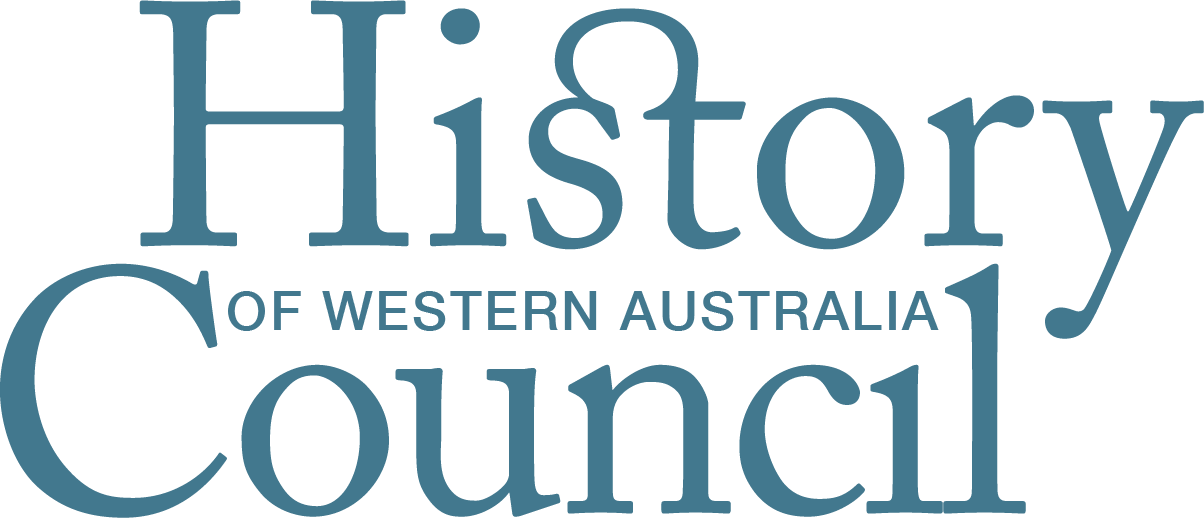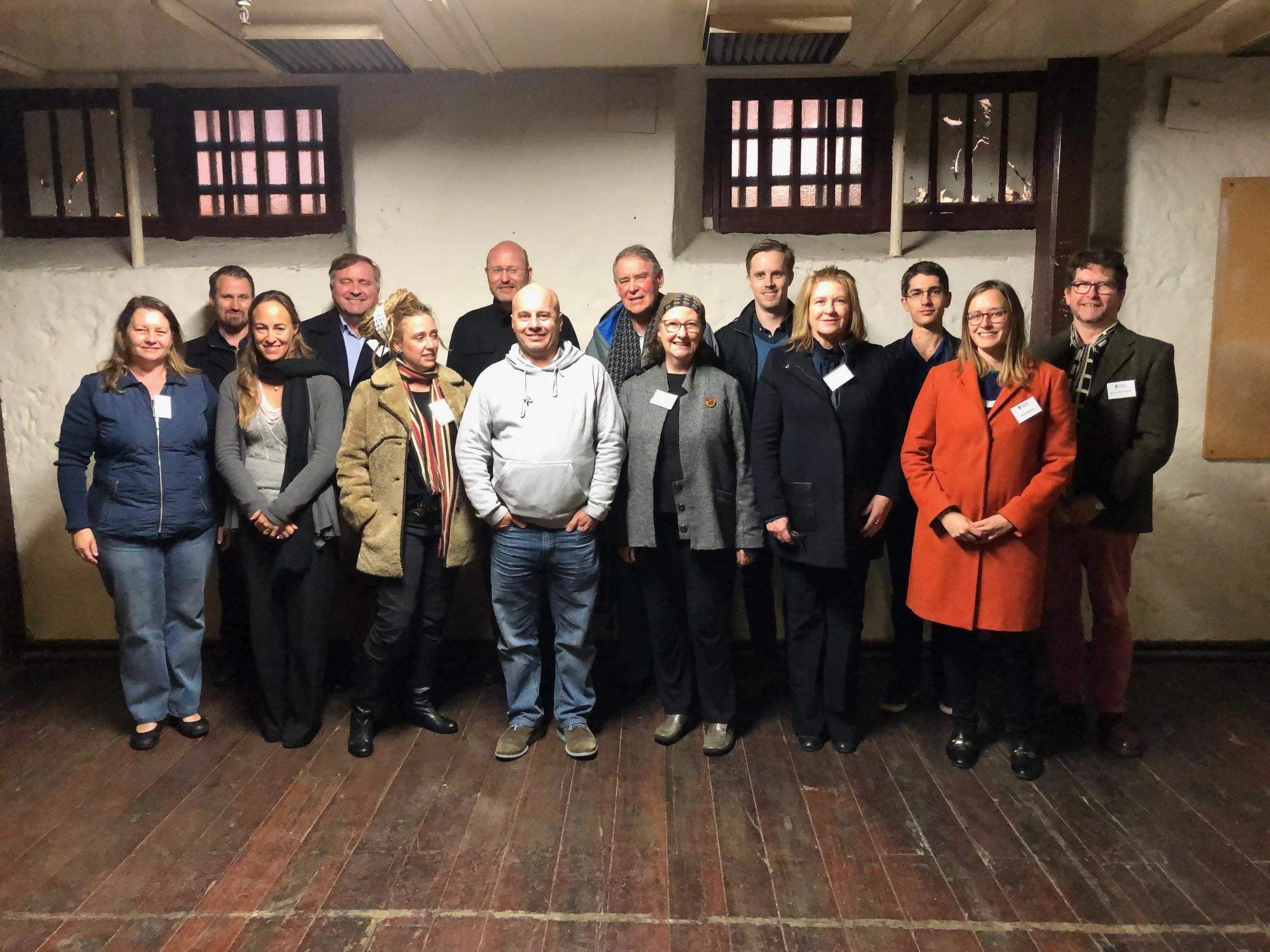The Carceral Colony – 7th July 2018, Fremantle Prison
Back row (L to R): Moss Wilson, Shane Burke, Hamish Maxwell-Stewart, Bill Edgar, Louis Marshall, Sean Liddelow, Bruce Baskerville
Front row (L to R): Lucy Hair, Olimpia Cullity, B’geella Romano, Sean Winter, Jenny Gregory, Denise Young, Katy Roscoe
In July a seminar was held at Fremantle Prison to discuss recent scholarship in Western Australia’s penal history. It was a full day with local, interstate and international speakers presenting 12 papers.
The first paper presented by Hamish Maxwell Stewart provided an excellent overview of transportation from the British Empire in the context of British colonial activities at the time and illustrated that convicts were sent to various locations depending on where labour was needed. Secondly Bill Edgar questioned the assumption that Western Australia’s convicts were cruelly treated and suggested that the convict system was in fact forward thinking and benign. The argument was based on research of statistics and evidence which looked at the convict’s lives after they had served their sentence and how their contribution stimulated the economy of a struggling colony. The third paper in the first session by Louis Marshall was an examination of the health effects of physical and psychological punishment in the West Australian convict system. Louis compared the detailed records of convict punishments with Fremantle Prison hospital admissions and mortality rates. It became evident from this statistical research that solitary confinement had detrimental health effects on the convicts as opposed to physical punishment such as floggings.
In the second session Sean Liddelow discussed the archaeological research undertaken along the York Road, in particular in the area of the Bilgoman Well which was used by a camp by convicts working on repairing and upgrading the road in the 1850s, the research is providing new information about this aspect of convict history. Another interesting paper was presented by Denise Young, the research examined the contribution of the convicts from NSW who assisted with the first settlement in Western Australian at King George Sound. Little research has been done in this part of the garrison settlement’s history from 1826 to 1831 and provided insight into the daily lives of the convicts during this period. The final paper of this session was from Shane Burke which focussed on convict activities in the Swan district and illustrates the importance of this region in providing food for the colony during the middle colonial period.
After lunch Bruce Baskerville discussed research into the convicts who were convicted of sodomy, buggary or an unnatural offence with a man. The subject area is difficult to research but Bruce has discovered some commonalities in terms of where these men lived and differences in their future where some became successful businessmen and others paupers. Moss Wilson from the Department of Planning, Lands Heritage discussed how heritage places connected with convicts have been identified and recorded. Moss also announced the latest initiative of the department, the 2018-2019 Convict Assessment Program and is seeking nominations of places from the public that may be added to the State Register. The final paper for this session was a joint presentation from Luke Donegan and Olympia Cullity from Fremantle Prison. They discussed the challenges involved in the management and interpretation of the convict built prison which is a member site of the Australian Convict Sites World Heritage Property.
The first paper of the final session was presented by B’geella Romano who discussed her archaeological analysis of graffiti and inscription at Fremantle Prison. Interesting was of how the spatial positioning of the graffiti identified the public and private spaces within the prison. Sean Winter’s research proposed that convicts were an integral part of the culture of the 19th century colony in Western Australia. This challenges what has commonly been believed that they were an isolated group and separate from mainstream society. Finally Katherine Roscoe provided an interesting analysis of indigenous interaction with convict labour regimes. The paper is based on research undertaken on the use of indigenous labourers for the construction of the infrastructure on Rottnest Island (Wadjemup).
In conclusion the day was extremely stimulating, thought provoking and enjoyable. The papers will be published in a special edition of Studies in Western Australian History in 2019. Thanks to the University of WA, Centre for WA History, Fremantle Prison and the Heritage Council for the organisation and sponsorship of the day.
Pam Harris

